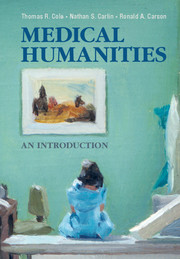Book contents
Epilogue
from Part IV - Religion and Medicine
Summary
Out of the crooked timber of humanity, no straight thing was ever made.
– Immanuel KantMedical humanities is a field for undergraduate and premed students, medical students and students in other health professions, as well as practicing physicians and health care practitioners. Medical humanities asks the most important questions. It asks existential questions about suffering and hope, life and death, the goals of medicine, the nature of disease, the experience of illness, the distinctions between curing and caring. And it asks moral questions about power in medicine, poverty and illness, just health care, and ethical issues in care of the dying. It uses the tools and methods of the humanities to engage these questions. As we articulate in the Introduction, medical humanities is an inter- and multidisciplinary field that explores contexts, experiences, and critical and conceptual issues in medicine and health care, while supporting professional identity formation.
Character development and critical thinking are complementary goals of medical humanities. This flows, to repeat our point in the Introduction, from our view that medical humanities is – or should be – fueled by the pursuit of humanitas, that compassionate stance toward others that ideally emerges from education in the liberal arts. This humanist educational ideal, whose origins lie in ancient Greece, was formulated by Cicero (104–43 BCE), refashioned in the Renaissance, and shaped again into the idea of a “liberal education” in Europe and the United States. Despite sharp criticism, it lives in strong form today, for example, in the work of Martha Nussbaum (1947–). The purpose of this ideal is to help form individuals who take charge of their own minds, who are free from narrow and unreflective forms of thought, who are compassionate and knowledgeable, and who act in the public or professional world.
- Type
- Chapter
- Information
- Medical Humanities , pp. 373 - 378Publisher: Cambridge University PressPrint publication year: 2014



